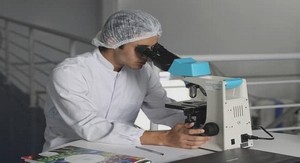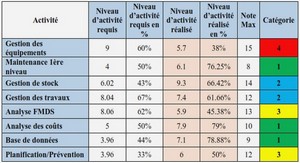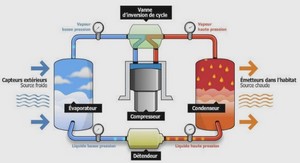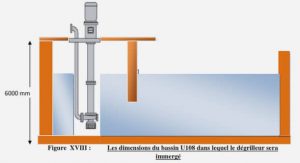With the aim of reducing the fuel emission, the aviation industry is developing a new generation of structures by the motivation of decreasing fuel consumption. As a result, new materials are used to build new ultra-high resistance airframes and components. Materials such as CFRP, Ti and CFRP/Ti stacks are currently used in the modern aerospace manufacturing industry that would be impossible or unimaginable some decades ago. Therefore, this chapter presents the main research related to the edge milling of CFRP, Ti, and CFRP/Ti stacks.
Stack of materials
A stack of material is an assembly of two or more layers of different types of materials. In most of the cases, the stack is attached by rivets or bolts which implies an extra cost due to the drilling process. This, in turn, adds weight because of the fixing bolts. It should be mentioned that this research focuses on stacking CFRP on the top and Ti6Al4V in the bottom, using the prepreg curing process to bond the CFRP to the Ti6Al4V .
Introduction to composite materials
A composite material is the combination of two or more materials in order to build a stronger material. It is made of a matrix which can be fragile in the case of thermoset resin while on the other hand, the fibers (reinforcing material) are stiffer and stronger. The matrix acts as a bonding agent to the fibers which provides good mechanical properties to the whole composite. Additionally, fibers can also be divided in two types: 1) long (continuous) or 2) short (discontinues) (Campbell, 2010) and there are many types of fiber such as glass fibers (G), carbon fibers (C) or kevlar (K) to name a few and the use of each one depends mainly on its application. Another classification of composite materials is based on the matrix type:
• Polymer matrix composite (PMC)
• Metal matrix composite (MMC)
• Ceramic matrix composite (CMC)
• Carbon matrix composite
In the case of PMC matrices, it is divided into 2 categories: 1) thermoset and 2) thermoplastic. Typical thermosetting matrix are: epoxy, phenols, polyamide and polyester resin; epoxy and polyester being the most common ones for composites.
The following list shows the most important advantages of thermosets as a matrix
1. Resistance to solvents and corrosive agents
2. Resistance to heat and high temperature
3. Fatigue strength
4. Excellent adhesion
5. Excellent Polished finishing
It should be noted that thermosets cannot be melted once they are cured and have a glass transition (Tg) of about 175°C for epoxies, temperature marking the transition from the glassy to the rubbery state. It is worth mentioning that epoxy is one of the most common thermosets used in the manufacture of composites. On the other hand, thermoplastics are polymers that can be reused again and again and can be remelted and remoulded without losing their properties. Besides, the thermoplastics have two major advantages over thermoset. The first is that it has an impact resistance as high as 10 times that of thermoset resins. The second is that it can be recycled, reshaped, remoulded in order to draw complex shapes, however, probably its major disadvantage is their more complex and expensive manufacturing processes. Therefore, the material used in this project is made of continuous carbon fibers embedded in an epoxy matrix.
Carbon Fiber Reinforced Plastic (CFRP)
Carbon Fiber Reinforced Plastics (CFRPs) have a high strength to weight ratio, high modulusto weight ratio, high-damping capacity, good dimensional stability to temperature changes, high rust and fatigue resistance, which is ideal for the aerospace industry. CFRPs can be found in automobiles, robotics, construction, transportation, luxury sporting goods, medical, and military applications.
For the CFRP materials, the Young’s modulus in each direction is different and depends on the direction of loading. If the load is in the fiber direction (Longitudinal), it is denoted by E1 and if it is a transversal load or in the matrix direction, it is denoted E2. These kinds of materials are called orthotropic and their counterpart, the isotropic material like the titanium has the same Young’s modulus in all directions. The properties of CFRPs make them excellent for special applications where the load is applied only in the required direction. Another characteristic of CFRP is the coefficient of thermal expansion “α” and the coefficient of moisture expansion “β.” In the case of the thermal expansion, this is almost 0 for CFRP in the fiber direction which is an advantage for aerospace applications dealing with the large differences in temperatures that airplanes have to support in service. Nevertheless, the biggest disadvantage is that the matrix is susceptible to thermal degradation due to the thermal and moisture expansion. This last one is null for metallic materials like the titanium.
Most of the composite structures in the aerospace industry are quasi-isotropic materials where the stiffness is the same in all directions. A good design is a balanced/symmetric laminate where the tension-flexural coupling and the in-plane tension-shear coupling are null while the torsion coupling can be lowered by adjusting the ply distribution (Issac M. Daniel, 2006) .
Ti6Al4V alloy
Titanium is highly resistant to corrosion and can be alloyed with iron, aluminum, vanadium, molybdenum, and other elements in order to produce strong, lightweight alloys for aerospace (jet engines, missiles and spacecraft), military, industrial processes (chemical and petrochemicals, desalination plants, pulp, and paper), automotive, medical and other areas (Kalpakjian & Schmid, 2014) .
In the market, there are many grades of Titanium alloys, grade 5 being the most used by the aeronautic industry, also known as Ti6Al4V or Ti 6-4. It has a composition of 6% aluminum, 4% vanadium, 0.25% (maximum) iron and 0.2% (maximum) oxygen, and the rest is titanium. This grade has an excellent combination of strength and rust resistance. Furthermore, it is used in the aerospace airframe and turbine engine components and also in a non-aerospace application such as in maritime offshore and power generation industries in particular due to its excellent corrosion resistance to seawater. Some other applications where this material can be found are in airframes, blade discs, fasteners rings, vessels, hubs and biomedical applications. Generally, it is used for high temperatures applications, e.g up to 700°C (Kalpakjian & Schmid, 2014).
INTRODUCTION |






